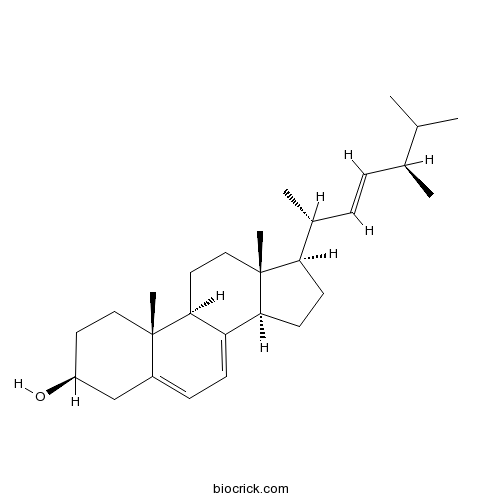Lentinula edodes
Lentinula edodes
1. The products in our compound library are selected from thousands of unique natural products; 2. It has the characteristics of diverse structure, diverse sources and wide coverage of activities; 3. Provide information on the activity of products from major journals, patents and research reports around the world, providing theoretical direction and research basis for further research and screening; 4. Free combination according to the type, source, target and disease of natural product; 5. The compound powder is placed in a covered tube and then discharged into a 10 x 10 cryostat; 6. Transport in ice pack or dry ice pack. Please store it at -20 °C as soon as possible after receiving the product, and use it as soon as possible after opening.
Natural products/compounds from Lentinula edodes
- Cat.No. Product Name CAS Number COA
-
BCN5787
Ergosterol57-87-4
Instructions

Genetic variation and phylogenetic analyses reveal transmission clues of Lentinula edodes partitivirus 1 (LePV1) from the Chinese L. edodes core collection.[Pubmed: 30031846]
Lentinula edodes partitivirus 1 (LePV1), a new mycovirus possibly responsible for serious morphological deformities during L. edodes cultivation, is widespread in the Chinese L. edodes germplasm. Here, LePV1 isolates from the Chinese genetically-diverse L. edodes core collection were identified to be highly conserved and devoid of codivergence between virus and its hosts. Phylogenetic analysis showed that the LePV1 isolates could be grouped into two distinct clades (subtype I and subtype II), without geographical bias in the composition of this population. Compared with the other LePV1 isolates, one non-synonymous variation was observed in the LePV1 isolate from the symptomatic strain SX12. Purifying selection appears to be the main evolutionary force acting on LePV1 and it may be subject to negative selection. Based on the aforementioned results, the domestication history of L. edodes in China and the high frequency of virus incidence in basidiospores, we postulate that LePV1 may exist in nature and have had relationship with L. edodes wild strains since early times. Moreover, wind-blown spores carrying LePV1 may play an important role for the transmission of LePV1 in nature, while artificial activities such as vegetative propagation and hybridization breeding may also transmit virus from wild strains to cultivated ones.
The heat shock protein 40 LeDnaJ regulates stress resistance and indole-3-acetic acid biosynthesis in Lentinula edodes.[Pubmed: 30003956]
DnaJ proteins, termed heat shock proteins based on their molecular weight, function as molecular chaperones that play critical roles in regulating organism growth and development as well as adaptation to the environment. However, little has been reported on their gene function in higher basidiomycetes. Here, the heat shock protein 40 (LeDnaJ) gene was cloned and characterized from Lentinula edodes. RNA interference was used to explore the function of LeDnaJ in response to heat stress and Trichoderma atroviride. Integration of the target gene into the L. edodes genome was confirmed by Southern blot analysis, and the silence efficiency of LeDnaJ was analyzed by qRT-PCR. The results revealed that LeDnaJ silence caused defects in mycelial growth and resistance to heat stress and T. atroviride, but increased the mycelial density compared with the wild type (WT) strain S606. Additionally, the IAA content showed a more than 10-fold increase in the WT after heat stress, but an about two-fold increase in the two LeDnaJ RNAi transfortants (LeDnaJ-i-6 and LeDnaJ-i-8). Previous study has shown that enhanced IAA (indole-3-acetic acid) content enhanced the thermotolerance of the heat-sensitive strain YS3357. In this study, it was documented that IAA amendments could partly restore the resistance to T. atroviride and thermotolerance of the two LeDnaJ RNAi transformants. Overall, LeDnaJ is nvolved in fungal growth, T. atroviride resistance, and thermotolerance by regulating the IAA biosynthesis in L. edodes.


